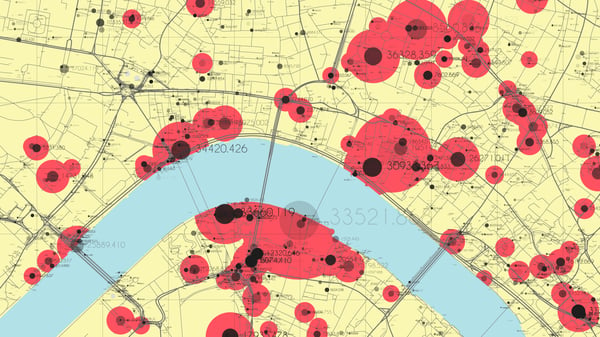4 Must-have Data Points for Dispatch-Billing Alignment and Maximum Reimbursement
NEMT Market Disruption Spells Opportunity for Hospitals and EMS Agencies
(6 min read) Non-emergency medical transport (NEMT) is a growing, multi-billion-dollar industry

(6 min read) Non-emergency medical transport (NEMT) is a growing, multi-billion-dollar industry. According to Frost & Sullivan, the total addressable NEMT market in the U.S. will surpass $12B by 2023, expanding at an estimated annual rate of 6.2%¹
This space is evolving rapidly, making some tectonic shifts that are here to stay. Here’s how ZOLL® Data Systems sees the NEMT market disruption, along with our advice to emergency medical services (EMS) agencies and hospitals on how to successfully navigate it.
NEMT Today
The skyrocketing growth in the NEMT market is propelled by an aging U.S. population and increased efforts to remove individual barriers to accessing healthcare. Patient access to care has become a hot button as education increases about the environmental and social determinants of health (how physical and social environments influence racial, ethnic, and socioeconomic disparities — including transportation for medical care — in health and wellbeing). Most recently, the obesity epidemic, opioid crisis, and COVID-19 pandemic have further heightened awareness around the importance of NEMT for vulnerable patient populations.

As the demand for patient transportation increases, existing NEMT inefficiencies and gaps are placing strain on healthcare systems. For example:
- Up to 7 million people miss or delay medical appointments each year due to transportation issues.²
- Missed appointments cost U.S. healthcare $150 billion annually.²
- 12.2% of adults with disabilities cannot get a ride to the doctor.²
- 80% of the eligible NEMT population does not require specialized vehicles, but may need specialized care.²
Transport Disruption
In the past, ambulances were the primary, if not only, option for all transport from one medical facility to another. The urgent need for more NEMT services has pushed hospitals, in particular, to find a wider variety of transport options that are more cost-effective for non-emergency patients.
Specifically, transportation network companies (TNCs) Uber and Lyft have partnered with healthcare providers and managed care organizations (MCOs) to provide NEMT services. At the same time, new, technology-based companies are entering the industry with ride-booking software. These platforms integrate with TNCs, providing hospitals with a NEMT “marketplace” where they can efficiently search, book, and track trips for patients who do not require specialized vehicles to the next point of care.
The confluence of the increased NEMT demand and new market players like the TNCs and ride-booking platforms has effectively disrupted the market. Hospitals in many areas now have an increased number of transportation options, which is diverting some business to non-EMS sources.

Meanwhile, the financial investment in the NEMT market continues to grow. Uber and Lyft have created healthcare transportation divisions, and technology companies are successfully securing funding to accelerate build-outs of their platforms. All signs point to this market disruption continuing at a rapid clip.
Lower Costs and Higher Patient Satisfaction for Hospitals
Recent changes to the NEMT landscape are a huge benefit for hospitals and healthcare systems. As the ones who often schedule the NEMT, hospitals need as many options as possible to ensure patients receive the proper care after being released — and now they have them.
Ride-booking platforms, like Roundtrip, simplify end-to-end NEMT management for hospitals. These systems integrate directly with electronic medical records (EMRs) and allow hospital staff to access a broad network that includes both their contracted vendors and other TNC options. Ride requestors can determine patient eligibility and benefits, choose between multiple transportation options, and order a ride with one click…all from an access point within the tools they are already using. Dashboards offer real-time ride status, so patients know when their ride will arrive and what’s happening next.
The result is that hospitals are able to move patients in and out quickly, while maintaining a high quality of care. Additionally, it ensures that ambulances are reserved for emergency response.
“Health systems are starting to look at patient transportation as a comprehensive program not as a vendor contracting exercise with local transportation companies,” says Kevin Mehalick, head of business development at Roundtrip. “Leading health systems that have large care networks, and even integrated health plans, are treating transportation as a revenue enabler, not just an expense line item.”
Industry experts project there will be significant increases in NEMT efficiency and patient satisfaction as a result of the market disruption. One study found that rideshare-based transportation service can increase show rates to primary care for Medicaid patients.³ Also, Lyft has published case study data showing a 40% decrease in emergency room (ER) utilization for one Medicaid plan and a decrease in wait time from 28 minutes for a traditional NEMT ride to just seven minutes for a Lyft for a health insurer.4 Especially noteworthy, it is estimated that hospitals achieve a 30-70% total annual net savings on ride costs when using modern NEMT (TNCs and digital networks).5
Translating the Market Disruption for Agencies
The NEMT market disruption creates concerns for some EMS agencies, but it also presents opportunities that should not be ignored. To stay competitive and develop new revenue sources, agencies must embrace and respond to this disruption.
Agencies benefit from building stronger relationships with hospitals, and by doing so, can capture a bigger share of the growing NEMT market to complement their existing service offerings.

It’s important to remember that more than 20 million Americans gained health coverage through the Affordable Care Act (ACA)6, and 20% of the U.S. population7 will be 65 or older in the next 10 years. In short, the need for emergency transport is projected to increase dramatically, and progressive EMS agencies will recognize that ambulances must be used more judiciously to respond efficiently to emergencies.
EMS agencies will still have contracts in which hospitals name them as the provider of choice. These relationships will not be usurped by the new technology platforms and TNCs. Rather, transport requests will be automatically fed into an agency’s dispatch system, where they can accept or decline, therefore maximizing their resources as they see fit. Viewing ride demand data by time of day, day of week, and level of service can inform scheduling decisions and strategic placement of crew and vehicles. Agencies without vendor contracts can pick up incremental business by joining the ride-booking marketplace, where they will be visible as transport options. Previously, hospitals only had access to a limited number of contracted vendors, but the marketplace creates more choices, as well as more opportunities for EMS agencies.
The future of NEMT is now. Savvy EMS agencies will see the market disruption as a chance to expand business and will take steps to adapt quickly. By seizing the moment and being an active participant with additional value to offer hospitals, agencies will reap benefits with expanded services that make the best use of their human and vehicle resources.
Conclusion
The impact of the NEMT market disruption is almost entirely positive. It gives hospitals and agencies new pathways to achieve growth and efficiency, while providing patients with more customized care and a more satisfying experience.
As the market continues to evolve, ZOLL® Data Systems offers advanced technology to help you stay ahead of the changes. ZOLL Dispatch is a data-rich call taking and computer-aided dispatch (CAD) solution that offers integration with Roundtrip, the leading digital transportation marketplace for better health outcomes.
If you’re ready to take advantage of the NEMT market disruption, we can help.
Resources
¹ Inchaustegui, Nicolas. “The Next Level of Care: Transportation Network Companies’ Disruption of Healthcare Mobility.” Frost & Sullivan website, Oct. 1, 2020, http://www.frost.com/frost-perspectives/the-next-level-of-care-transportation-network-companies-disruption-of-healthcare-mobility/. Accessed 19 July 2021.
² “Non-emergency Medical Transportation (NEMT) in North American Healthcare Mobility.” Frost & Sullivan website, 2020, store.frost.com/non-emergency-medical-transportation-nemt-in-north-american-healthcare-mobility-2020.html. Accessed 19 July 2021.
3 Chaiyachati, Krisda H. Hubbard, Rebecca A. Yeager, Alyssa. Mugo, Brian. Shea, Judy A. Rosin, Roy. Grande, David. “Rideshare-Based Medical Transportation for Medicaid Patients and Primary Care Show Rates: A Difference-in-Difference Analysis of a Pilot Program.” National Center for Biotechnology Information, U.S. National Library of Medicine website, June 2018, www.ncbi.nlm.nih.gov/pmc/articles/PMC5975142/. Accessed 19 July 2021.
4 “New Data Shows Lyft is Improving Access to Care For Millions of Medicaid Recipients.” Lyft website, Aug. 19, 2020, www.lyft.com/blog/posts/research-improving-access-to-care-medicaid. Accessed 19 July 2021.
5 Rochlin, Danielle H. Lee, Chuan-Mei. Scheuter, Claudia. Milstein, Arnold. Kaplan, Robert M. “Economic Benefit of ‘Modern’ Nonemergency Medical Transportation That Utilizes Digital Transportation Networks.” U.S. National Library of Medicine website, March 2019, pubmed.ncbi.nlm.nih.gov/30676791/. Accessed 19 July 2021.
6 “Chart Book: Accomplishments of Affordable Care Act.” Center on Budget and Policy Priorities website, March 19, 2019, www.cbpp.org/research/health/chart-book-accomplishments-of-affordable-care-act. Accessed 19 July 2021.
7 “Older People Projected to Outnumber Children for First Time in U.S. History.” United States Census Bureau website, March 13, 2018, www.census.gov/newsroom/press-releases/2018/cb18-41-population-projections.html. Accessed 19 July 2021.
Related Posts
How EMS Agencies Can Reframe Need and Refocus Resources With Geospatial Analytics
How To Minimize Radio Chatter and Reduce Guesswork With Smarter Dispatch Resource Management
ZOLL Pulse Blog
Subscribe to our blog and receive quality content that makes your job as an EMS & fire, hospital, or AR professional easier.
ZOLL Pulse Blog
Subscribe to our blog and receive quality content that makes your job as an EMS, fire, hospital, or AR professional easier.




